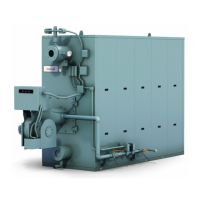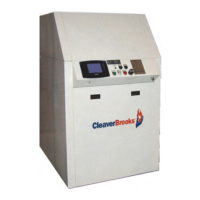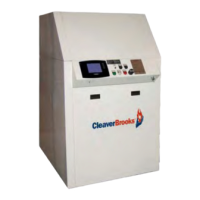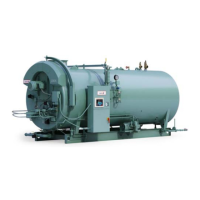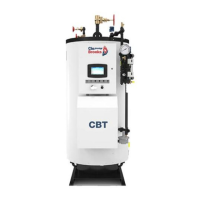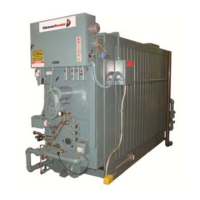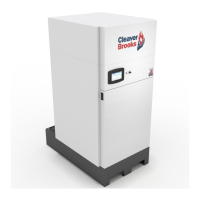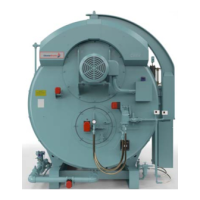Chapter 6 Adjustment Procedures
6-4 750-177
Point D represents the maximum firing rate of the burner, or
highfire. In the event pressure or temperature drops while the
burner is firing at highfire, it indicates that the load exceeds
the capacity of the boiler.
The firing graph (Figure 6-4) shows that point B and point C
do not coincide. Extreme load conditions could require the
points be closely matched.
When set as shown, with a time lag between B and C, the
burner will be in a low fire position upon a restart and will fire
at that rate for a short period of time before falling pressure or
temperature requires an increase in the firing rate.
!
DANGER
CAUTION
Excessive cycling increases the potential
and severity of internal condensation. On-
Off cycling should be limited to eight (8) cy
-
cles or less per hour to keep the blower mo-
tor from overheating and excessive wear on
the switch gear and pilot. Failure to follow
these instructions could result in damage
and premature failure of the equipment.
If points B and C overlap when restart occurs, the burner
would drive to a higher firing position immediately after the
main flame was proven.
Note: It is not recommended that the boiler
controls be set so as to overlap the
modulating control range and operating
control range.
When firing a cold boiler, it is recommended that the burner
be kept at low fire, under manual flame control, until normal
operating pressure or temperature is reached. If the burner is
not under manual control on a cold start, it will immediately
move toward high fire as soon as the program control releases
the circuit that holds the burner in low fire. The modulating
control will be calling for high fire and the burner will move
to that position as rapidly as the damper motor can complete
its travel.
Note: Rapid heat input can subject the
pressure vessel metal and refractory to
undesirable conditions.
Do not operate the boiler in excess of 90% of the safety valve
relief setting. The closer the operating pressure is to the safety
valve relief pressure, the greater the possibility of valve
leakage. Continued leakage, however slight, will cause
erosion and necessitate early safety valve replacement. The
control settings on a hot water boiler must be within the
temperature limits of the boiler.
Ideally, the boiler operating controls should be set under
actual load conditions. Especially under new construction
conditions, the boiler is initially started and set to operate
under less than full load requirements. As soon as possible
thereafter, the controls should be reset to provide maximum
Modulated Firing
Range
Firing Rate
100%
0%
Minimum Input
(Low Fire)
Burner Off
Increasing
Falling Temp.
or Pressure
“ON - OFF”
Differential
Rising Temp.
or Pressure
Increasing
Increasing
(Burner ON)
(Burner OFF)
(Burner OFF)
Boiler Temp.or Press
High Limit Control
Safety Shutdown
Operating Limit Control
Response
Modulation Control Response
D
C
B
A
Figure 6-4: Firing Graph
6-4
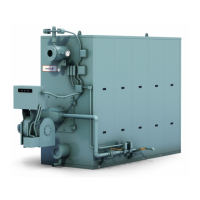
